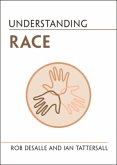In evolutionary biology, an evolutionary arms race is an evolutionary struggle between competing sets of co-evolving genes that develop adaptations and counter-adaptations against each other, resembling an arms race, which are also examples of positive feedback. The co-evolving gene sets may be in different species, as in an evolutionary arms race between a predator species and its prey, or a parasite and its host. Alternatively, the arms race may be between members of the same species, as in the manipulation/sales resistance model of communication or as in runaway evolution or Red Queen effects. One example of an evolutionary arms race is in sexual conflict between the sexes. Thierry Lodé emphasized the role of such antagonist interactions in evolution leading to character displacements and antagonist coevolution. The Escalation hypothesis put forward by Geerat Vermeij speaks of more general conflicts and was originally based on his work with marine gastropod fossils. Co-evolution itself is not necessarily an arms race. For example, mutualism may drive co-operative adaptations in a pair of species.
Bitte wählen Sie Ihr Anliegen aus.
Rechnungen
Retourenschein anfordern
Bestellstatus
Storno








